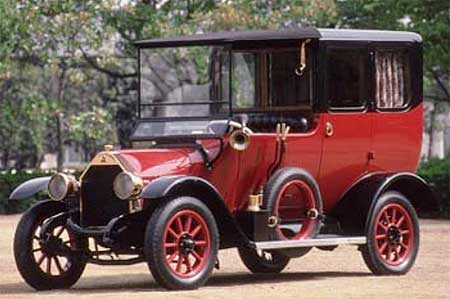First
Japanese Car
The first Japanese car in the history of the world carries some
controversy and mystery with it. Some say the first Japanese car
is the Yamaba omnibus built in 1904 and powered by steam. Others
say the first car built in Japan was the Yoshida omnibus built
in 1905 powered by a gasoline engine.
The automobile industry of Japan is known worldwide for its
charming designs, innovative models, standard of quality, and
use of advance technology. Though the first Japanese car came
into existence years after cars were used in America and Europe,
Japanese auto brands, such as Toyota, Honda, Nissan, Suzuki, and
Mitsubishi, are household names for car lovers worldwide.
The Japanese automakers now lead the world in sales, technological
changes, and production. Six of ten leading car producers in the
world are from Japan. They also lead in collaborations and provide
technical support to auto industry around the world.
Japanese Domestic Car Industry
The automobile industry in Japan began taking shape in the early
part of 1910 when the Japanese conglomerate known as Zaibatsu
came into being. However, the nonexistent consumer car market
delayed the production of cars until 1917 when Mitsubishi manufactured
Model A, the first Japanese production car. This seven-seat sedan
was expensive and failed to compete with US and European cars.
In 1922, Isuzu came up with its first Japanese car A 9 in collaboration
with British auto gaint Wolseley. It was the first ever dedicated
passenger car in Japan.
|
The1930s saw the emergence of a number
of car manufacturers in Japan, such as Toyota, Suzuki, and
Nissan. Toyota's first Japanese car Toyota AA hit the road
in 1936. Datson by DAT Motors, now Nissan, was the first
Japanese small car produced in 1931.
|

Mitsubishi Model A |
The post-war period saw boom in car production in Japan. Suzuki
introduced Suzulight in 1955, the first Japanese car that came
with innovative four-wheel independent suspension, front-wheel
drive, and pinion steering. In the 1960s, Japanese auto giants
focused on smaller cars called Kei cars to evade taxes and boost
imports. Honda produced its first car HondaS500 in 1963. Three
years later, the world saw Toyota's Corolla, which is the best-selling
car in the world.
In 1986, Honda introduced the first Japanese luxury car Acura.
Soon Suzuki and Toyota came up with more designs, while Nissan
began focusing only on high end cars.
Japanese Cars in US
Toyota was the first Japanese car maker to enter the US market.
The oil crisis in the 1970s was an opportunity for Japanese auto
makers to entrench themselves in the United States. Their small,
inexpensive, and fuel efficient cars attracted a large number
of Americans and Europeans. They also equally benefited from the
economic boom in the 1980s by introducing luxury cars that had
less price and better technology compared to US car manufacturers.
Toyota Crown was the first Japanese car to be imported to the
United States in 1957. The Japanese auto giants established their
US manufacturing units in the early eighties. Honda's Accord was
the first Japanese car to be built in the United States in 1982.
Toyota introduced Prius in 1997 to become the first Japanese car
maker capable to produce hybrid cars. The global sales of the
car began in 2001. Honda produced world's fist zero emission and
hydrogen car FCX in 2008.
Japanese Car Industry at Present
The Japanese car industry has come a long way since the production
of the first Japanese car in 1917. Now their cars run in every
country and Japan is the second largest manufacturer of cars.
Toyota is the world's largest car manufacturer, and Honda has
five out of ten most fuel-efficient cars in the world.
|

